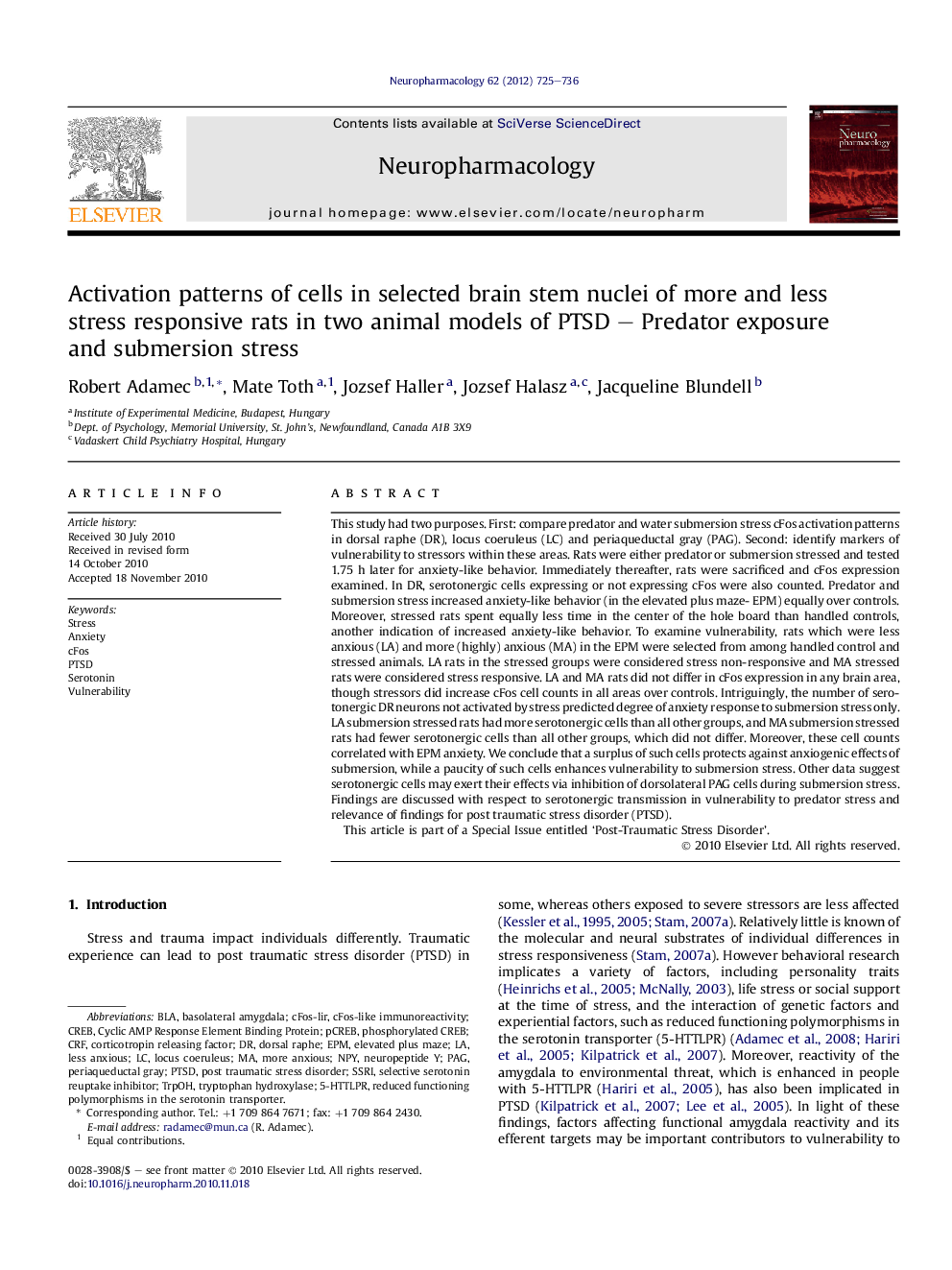| کد مقاله | کد نشریه | سال انتشار | مقاله انگلیسی | نسخه تمام متن |
|---|---|---|---|---|
| 2493770 | 1115528 | 2012 | 12 صفحه PDF | دانلود رایگان |

This study had two purposes. First: compare predator and water submersion stress cFos activation patterns in dorsal raphe (DR), locus coeruleus (LC) and periaqueductal gray (PAG). Second: identify markers of vulnerability to stressors within these areas. Rats were either predator or submersion stressed and tested 1.75 h later for anxiety-like behavior. Immediately thereafter, rats were sacrificed and cFos expression examined. In DR, serotonergic cells expressing or not expressing cFos were also counted. Predator and submersion stress increased anxiety-like behavior (in the elevated plus maze- EPM) equally over controls. Moreover, stressed rats spent equally less time in the center of the hole board than handled controls, another indication of increased anxiety-like behavior. To examine vulnerability, rats which were less anxious (LA) and more (highly) anxious (MA) in the EPM were selected from among handled control and stressed animals. LA rats in the stressed groups were considered stress non-responsive and MA stressed rats were considered stress responsive. LA and MA rats did not differ in cFos expression in any brain area, though stressors did increase cFos cell counts in all areas over controls. Intriguingly, the number of serotonergic DR neurons not activated by stress predicted degree of anxiety response to submersion stress only. LA submersion stressed rats had more serotonergic cells than all other groups, and MA submersion stressed rats had fewer serotonergic cells than all other groups, which did not differ. Moreover, these cell counts correlated with EPM anxiety. We conclude that a surplus of such cells protects against anxiogenic effects of submersion, while a paucity of such cells enhances vulnerability to submersion stress. Other data suggest serotonergic cells may exert their effects via inhibition of dorsolateral PAG cells during submersion stress. Findings are discussed with respect to serotonergic transmission in vulnerability to predator stress and relevance of findings for post traumatic stress disorder (PTSD).This article is part of a Special Issue entitled ‘Post-Traumatic Stress Disorder’.
► This study had two purposes.
► 1st: compare predator and water submersion stress cFos activation patterns in the brain stem.
► 2nd: identify markers of vulnerability to stressors within these areas.
► Both stressors increased cFos expression equally in most areas.
► Number of raphe 5HT neurons predicted degree of anxiety response to submersion stress only.
Journal: Neuropharmacology - Volume 62, Issue 2, February 2012, Pages 725–736